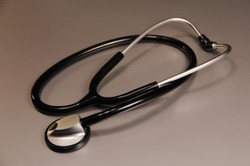This illness manifests many signs and symptoms which also take place in other infectious diseases. For example, these individuals may have fever, chills, night sweats, and fast heart rate. There may be fatigue, joint or muscular aches, cough and swelling of the abdomen, feet, or lower extremities. In any event, treatment requires antimicrobial therapy in high doses over several weeks [1, 2, 3].
It is also possible to prevent some of these scenarios with antibiotic therapy prior to certain dental, surgical, or other medical procedures [1, 2, 3]. There has, however, been controversy about these uses of antimicrobial agents.
The serious nature of infective endocarditis does not necessarily keep the human immune system from protection. This includes, of course, humoral and cellular immunity. Macrophages will appear in the peripheral blood. Splenic enlargement is another way the human body reacts to the situation. The human body will generate opsonic antibodies, complement fixation antibodies, and cryoglobulins. Agglutination antibodies are well-known items which will come to the defense. [1].
Cardiac abnormalities will enter the picture as vegetations. These include valve leaflet problems of the mitral, tricuspid, aortic, and pulmonary valves. Naturally, the patient is at risk for acute myocardial infarction [1].
Another item of interest is mycotic aneurysm as they may not become evident to the clinician for several years. Moreover, autopsy findings in these clients have demonstrated the presence of splenic infarcts. There are also cases with small emboli in blood vessels, and this leads to septic pulmonary emboli [1].
Skin lesions in this disease may include Janeway lesions, Osler’s nodes, petechiae, and cutaneous infarcts. Eye abnormalities may occur with hemorrhage of the retina and a central region of pale appearance [1].




 The Reality of Aspirinon 05/24/2021
The Reality of Aspirinon 05/24/2021
 An Old Microbeon 03/31/2021
An Old Microbeon 03/31/2021
 Coronavirus and Mental Illnesson 02/14/2021
Coronavirus and Mental Illnesson 02/14/2021
 Acute Ischemic Strokeon 12/25/2020
Acute Ischemic Strokeon 12/25/2020


Comments